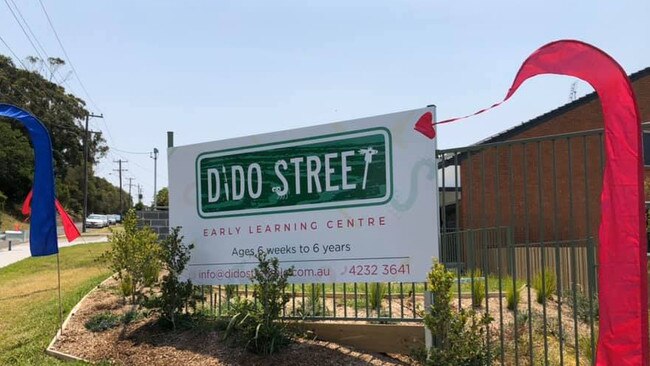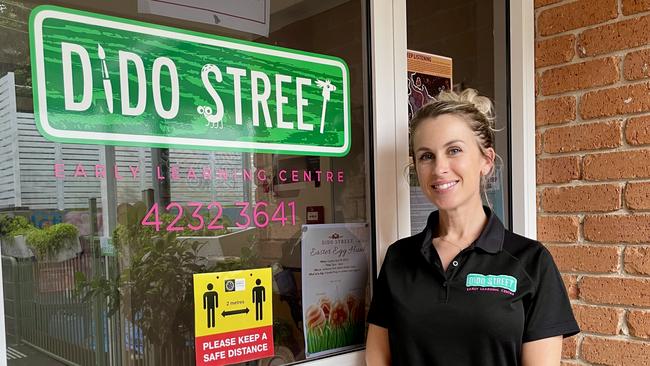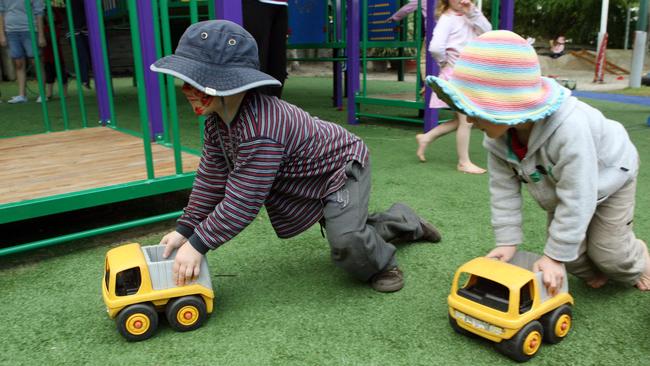‘We can’t keep up’: Kiama childcare operator Kate McNaughton opens up about childcare crisis
An owner of a childcare centre in Kiama believes the current childcare system is broken as a new report shines more light on the crisis.
Illawarra Star
Don't miss out on the headlines from Illawarra Star. Followed categories will be added to My News.
Vast areas across NSW continue to struggle to meet the demands of childcare with the Illawarra region grappling with this crisis.
A report by Victoria University, which is affiliated with the Mitchell Institute, claims three million people are living in what it classifies as ‘childcare deserts’ - places where there are more than three kids under five for every childcare place available.
Kiama is one such desert with nearly three and a half children for every spot available and the owner of the town’s Dido Street Early Learning Centre, Kate McNaughton indicating the problem is particularly dire when it comes to babies under the age of two.
“There is about a three-year wait for our baby room,” Kate McNaughton told The Illawarra Star.
“We can’t even get siblings (of children already in the centre) in at the moment because our baby room waiting list is so high.
“It’s only $10 extra (per day), but the demands are higher (for the centre) as we have two educators for four babies and in preschool that ratio is one to 10.
“I have got families who go on the waitlist as soon as they find out they’re pregnant and then I have others who have been waiting for two years.”
The childcare dilemma is facing one of Ms McNaughton’s employees who is about to have a baby, but she doesn’t know if there will be a spot available at Dido Street.
“I have a pregnant staff member who is finishing up this Friday,” Ms McNaughton explained.
“She is looking at returning in January 2023 and she is not sure how that is going to look because I have been honest and open with her.
“I’ve told her of course you are a good and loyal staff member and I want to look after you and there has got to be perks to the job. If you work at a childcare centre you’ve got to be able to bring your children.
“However, how is that going to look from a business point of view when I need to work fairly with my clientele when their siblings are still waiting for a spot?”

Ms McNaughton, whose centre has children from Albion Park through to Nowra, said there are a myriad of factors leading to the crisis including a lack of people training to become childcare workers, a Covid baby boom and families moving out of the big cities.
“There is a massive shortage (of educators) in the industry,” she said.
“Covid saw a lot of staff leave because of the risks involved, they didn’t want to have those risks anymore and the wages are so low and they could have got the same amount for sitting at home.
“The TAFE teacher who comes in (to Dido Street) said they normally have 60 enrolled but they’ve only got 16 this year working towards obtaining the Certificate III or Diploma.
“I [also think there is strain on childcare centres] because our population is expanding too quickly for what we can cater for. During the pandemic, in about 2021, we had families moving down from Sydney left, right and centre.
“When I spoke to families (about why they moved) they said it was because they were able to work from home and they wanted a nicer lifestyle on the coast. The with development of Shell Cove, Kiama is expanding profusely and we can’t keep up.”

Ms McNaughton said the federal government needs to step up and make it easier for families to access childcare centres, as well as assisting centres to cater for babies.
“I really think the government needs to do more to assist centres to accommodate babies,” she said.
“We need it to be more financially viable for babies to come to the centre. I’ve even thought about getting rid of baby care, I love having them at the centre, but in a business sense it’s not worth it.
“There is already a massive shortage (of places) and I am predicting even more centres just turning babies away in the long run and with this Covid baby boom I have no idea what centres are going to do.
“We need it to be more financially viable for babies to come to the centre and they need to be putting trainees through apprenticeships that can be put with staff.
“A lot of our families have lost businesses and lost jobs (during Covid), especially in hospitality. They‘re trying to get back on their feet too, but they need care (for their children) and we can’t offer them that care.”
How the data was calculated
The report uses data from Australian Children’s Education and Care Quality Authority (ACECQA), which rates the more than 8,700 childcare centres that operate nationally.
The report’s authors decided on using data for childcare places for 0-4 year olds, only including centres open more than forty hours per week, and excluding children who attend preschool.
From the ACECQA data, that equalled out to 602,000 places nationally for 1.52 million children.
This results in a ratio of about 0.396 childcare places per child, if childcare was equally divided across the country.
The authors classify childcare deserts as places where there are more than three kids for every childcare place available. That also equals a score of 0.33 or lower.
By comparison, an oasis is a place that scores 0.6 or higher, meaning there are 0.6 places for every child in the area, significantly above the national average.
The authors explain that the score of 0.6 equals out to three full days of childcare available for every child, every week, meeting the bar of ‘universal access’.
To calculate how many childcare options an individual ABS-defined statistical region had, travel times were used as a metric instead of distance, LGA, or suburb, to more fairly consider how people move in regional areas, according Dr Peter Hurley.
For example, two opposite ends of a peninsula might be within 10km, but an hour drive away.
To calculate the score of each region, the team used a baseline of a 10 minute drive for metropolitan Sydney, and a 20 minute drive for regional areas, then weighted the numbers higher or lower depending on whether the childcare options were within the travel time.

So a region with multiple options that were 2.5 minutes away would score higher than a region with the same options that were 10 minutes or more away.
That also allows for a fairer comparison between two households in opposite ends of the same small regional town, and equalises the difference in convenience.
Because the authors have chosen to weigh the childcare places available against travel times, the scores aren’t straightforward comparisons of availability, they also take into account convenience, which the authors believe is a huge factor in parent’s childcare choices.
It more fairly weighs up the issue of accessibility, according to Dr Hurley.




